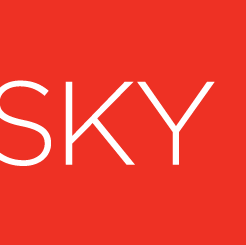When compared to older methods of recruitment strategy, digital recruitment strategy is different in almost every single way. Digital tools allow companies with smaller HR departments to do more. They also allow companies to cast a wide net of distribution, target niche candidates, and maintain direct, meaningful connections with candidates.
Digital tools offer unparalleled avenues for communication. They include analytics that measure the efficacy of marketing strategies. This empowers companies to optimize based on what works best according to the numbers. The combination of digital recruitment with analytics yields a holistic recruitment strategy.
Strategies for digital recruitment
Today’s audiences are highly fragmented. They all have their own browsing habits, preferred recruiting sites, priorities, and expectations. The best strategy is to spread the message across job aggregates and email lists. Job aggregates allow you to sponsor jobs to elevate your position in the results. There are various models for sponsorship; pay-per-click charges a client based on impressions while pay-per-applicant charges based on application submissions.
Email lists are helpful for targeting specialized fields and geographical areas. There are subscription-only mailing lists for health care categories, such as nurses, therapists, home health care professionals, et cetera. Email marketing is the preferred method for targeting passive job seekers.
Beyond the wide net: specialized digital strategies for recruitment
A wide net does not constitute a viable recruitment strategy. To fully harness the power of digital recruitment, HR departments must go above and beyond and make use of some unique tools.- Search engine marketing is the strategy of placing ads next to search results when candidates search for keywords relevant to a particular industry. Google, Bing, and Facebook all have ad-placement tools that allow companies to target candidates according to the content of their current search and to previous searches and other demographic data.
- Native or “seamless” advertising is a pay-per-click model. Ads are formatted to resemble other content on the site. On a news site an ad would resemble a news story and would be listed among other, regular articles. There is typically a small disclaimer that signifies that the article is sponsored content. Native advertising is a popular method of advertising for sites such as ESPN, Fast Money, CNN, Fox, Time, and People.
- Video advertising is increasingly tough as it is difficult to get potential hires to watch full recruitment videos. However, it is a common strategy for companies to produce a recruitment video and host it on their career site.
- Retargeting is the strategy of targeting applicants who only partially completed job applications. Retargeting allows companies to track down those who lost interest, got distracted, or simply forgot about their ongoing application. A retargeting strategy would consist of continuing to market to these candidates with the goal of getting them to return and complete their applications.
Trends to watch out for
Social media is a very useful tool for recruiters. Facebook is the preferred social media platform for recruitment. Popular strategies with Facebook include generating a “like” campaign in order to increase the number of subscribers and using their highly advanced pay-per-click advertising system. Twitter is also a popular platform for recruiting. It’s easy to tweet jobs and career videos and get them boosted through Twitter’s built-in promotion feature. LinkedIn also offers a number of recruitment services, such as floating ads on search results, developing a career page, and running “work with us” ads.
Still useful but less popular is mobile advertising. Texts are more popular than email, so a text messaging campaign is useful in reaching out to individuals with targeted information. These campaigns are more labor-intensive—they require a company gather cell phone data and permission or the use of a third party that might already have previously collected data.
Digital recruitment has become the central task of HR departments in every industry. Casting a broad net, using unique tools such as native ads, search engine marketing, and social media, you’re guaranteed to stay ahead of the curve and access candidates that are more enthusiastic, skilled, and qualified.
